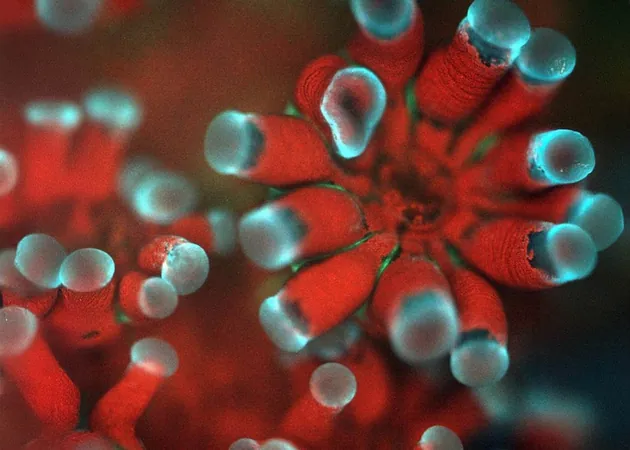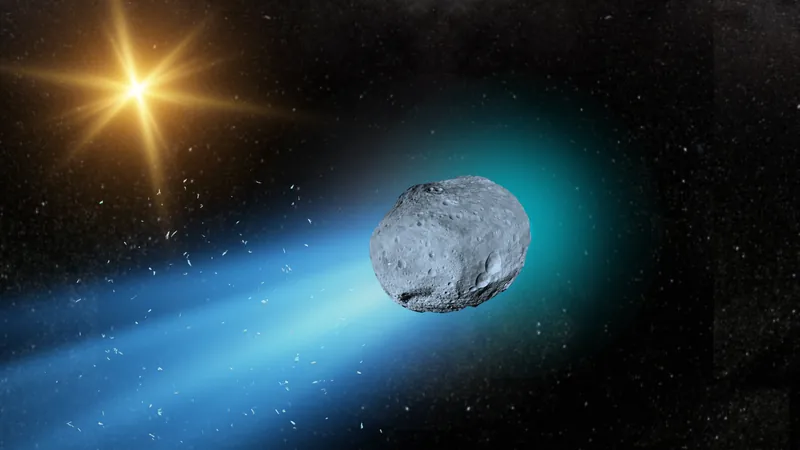
Revolutionary Microscope Unlocks Secrets of Coral Health
2025-07-07
Author: Sophie
Coral Reefs in Crisis
Coral reefs are facing a global emergency. As ocean temperatures rise and pollution spreads, these once-vibrant ecosystems are fading and dying.
Real-Time Visualization of Coral Bleaching
For decades, scientists have understood that coral bleaching—caused by the loss of vital symbiotic algae—was a dire threat to these ecosystems. However, observing this process at a cellular level in real-time remained impossible until now.
Introducing the BUMP Microscope
Researchers at UC San Diego's Scripps Institution of Oceanography have launched a groundbreaking handheld underwater microscope, aptly named the Benthic Underwater Microscope imaging PAM (BUMP). This marvel allows scientists to explore coral photosynthesis directly within their natural habitat without causing harm.
Developed with funding from the U.S. National Science Foundation, the BUMP microscope merges high-resolution imaging with pulse amplitude modulated (PAM) fluorometry, revealing how efficiently the algae perform photosynthesis within the corals.
The Vital Role of Algae
The algae, known as symbionts, are crucial for coral survival. They thrive within coral tissues, transforming sunlight, water, and carbon dioxide into sugars and oxygen—nutrients essential for coral growth and reef construction. However, environmental stressors force corals to expel these algae, leading to the alarming phenomenon known as coral bleaching.
A Leap in Coral Health Assessment
Lead researcher Or Ben-Zvi expresses excitement over this technological breakthrough: "This tool enables us to examine microalgae within corals without intruding on their ecosystem. It’s like a nurse checking your pulse—monitoring the coral’s health without invasive procedures."
Portable and User-Friendly
Compact enough to fit in a carry-on bag, the BUMP microscope is easily transportable for divers. Controlled by a touchscreen and powered by a battery pack, it utilizes focused LED lights and high-magnification lenses to produce vivid imagery, detailed 3D scans, and precise photosynthesis maps.
Discoveries Beneath the Surface
During field tests in hotspots like Hawaii and the Red Sea, Ben-Zvi noted unexpected behaviors in corals, such as contracting tentacles—possibly indicating efforts to capture drifting particulates. "The more we observe, the more we learn about coral behavior in various conditions. It's like witnessing magic," she stated.
Advancing Coral Conservation Efforts
As climate change poses an increasing threat to corals, this microscope offers a chance for early detection of stress indicators, aiding researchers in implementing preventive measures. Jaffe, a co-author on the study, underscores the potential for the BUMP to revolutionize coral health observations, vital for conservation efforts.
Expanding to Other Marine Life
The BUMP's potential extends beyond corals. Researchers are beginning to use this innovative tool to study other photosynthetic marine organisms, including young kelp found off the California coast, promising a broad range of future applications.
A New Lens on Underwater Ecosystems
In summary, the BUMP microscope equips scientists like never before, offering a fresh perspective on underwater life—dynamic, intricate, and alive. With this powerful tool, there's hope for discovering better strategies to preserve our planet’s most delicate ecosystems.
The full findings were published in the journal Methods in Ecology and Evolution.









 Brasil (PT)
Brasil (PT)
 Canada (EN)
Canada (EN)
 Chile (ES)
Chile (ES)
 Česko (CS)
Česko (CS)
 대한민국 (KO)
대한민국 (KO)
 España (ES)
España (ES)
 France (FR)
France (FR)
 Hong Kong (EN)
Hong Kong (EN)
 Italia (IT)
Italia (IT)
 日本 (JA)
日本 (JA)
 Magyarország (HU)
Magyarország (HU)
 Norge (NO)
Norge (NO)
 Polska (PL)
Polska (PL)
 Schweiz (DE)
Schweiz (DE)
 Singapore (EN)
Singapore (EN)
 Sverige (SV)
Sverige (SV)
 Suomi (FI)
Suomi (FI)
 Türkiye (TR)
Türkiye (TR)
 الإمارات العربية المتحدة (AR)
الإمارات العربية المتحدة (AR)